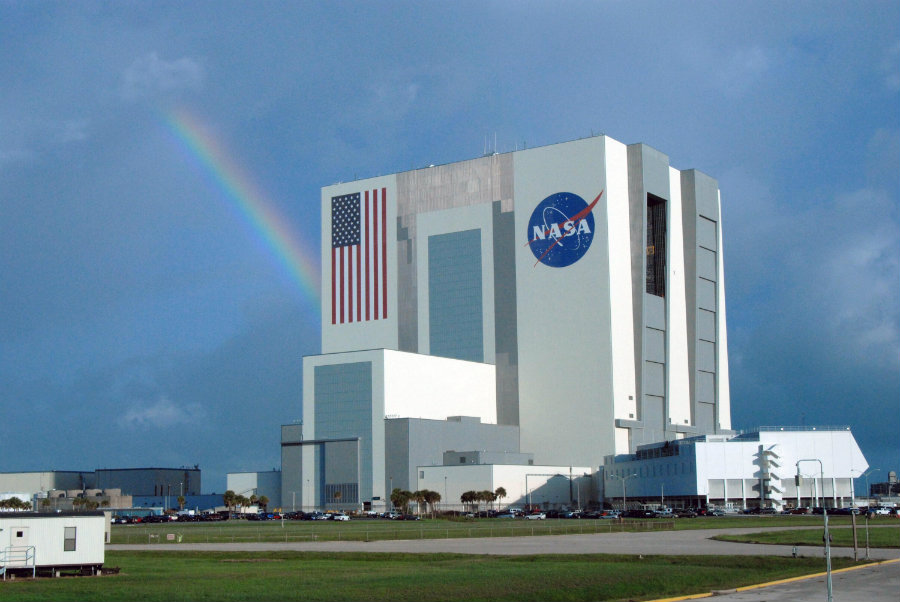NASA’s Kennedy Space Center (KSPC) partially reopened for visitors Sunday after officials had determined the Hurricane Mathew had only produced minor damage to the facility as it swept through Cape Canaveral. Preliminary inspections didn’t reveal evidence of damage to flight hardware.
The NASA complex is home to multiple office buildings, launch pads, and the huge Vehicle Assembly Building initially designed to build the Saturn V rocket. Preliminary reports of damage appear to be minor, but it will take time to assess the damage caused to every single building in the space center.

“We dodged a bit of a bullet last night with things shifting to the east and the storm being less intense overall,” Brig. Gen. Wayne Monteith, commander of the 45th Space Wing, posted Friday on Facebook, as reported by Florida Today. “That said, we are not out of the woods yet and your safety remains my primary concern.”
George Diller, a KSC spokesman, confirmed to Florida Today that the site would have suffered more serious damage if it had been hit directly by the hurricane. The staff had been significantly reduced as they thought the storm would hit the facility directly. As part of the 100-plus person staff working at the Launch Control Center during the storm, Diller described the damage as “collateral.”
NASA blog informed that the team began assessing the damage on Friday right after the winds shifted to relatively safe levels. Aerial surveys carried out on Saturday revealed that there had been limited damage to the roof, to support buildings and that there had been “limited water intrusion.”
Electrical services had also been disrupted. Inspectors continue to make safety checks to ensure the damage is not worse as seen from the air. Fox News reported that NASA’s Damage Assessment and Recovery Team were set to enter all facilities Saturday to get more detailed reports.
All new buildings in the Kennedy Space Center were reconstructed after Hurricane Andrew became the most destructive storm in history in 1992. A 2006 NASA hurricane plan reported that they buildings were designed to withstand stronger storms with winds of 130-134 mph. However, Hurricane Frances made a hit on Florida in 2004 and toppled rocket displays. The Vehicle Assembly Building also suffered significant damage.
The center, which is located right on the water to reduce the potential impact on civilians should a catastrophe occur during a launch, appears to have avoided severe damage even after being exposed to winds averaging between 58 and 81 mph.
Some feared that the GOES-R weather satellite, scheduled for launch on Nov. 4, could be damaged. But the National Oceanic and Atmospheric Administration (NOAA), which is collaborating on the project, explained that the satellite is housed in a building constructed to withstand category four hurricane conditions, as reported by Fox News. GOES-R is contained at Astrotech Space Operations in Titusville, Fla., near Cape Canaveral.
Hurricane Mathew still causing floodwaters to rise
In the hurricane’s aftermath, hundreds of people continue to be stranded as floodwaters continue to increase, according to a report by NBC News. At least 23 people have been killed across North Carolina (10), Florida (6), South Carolina (3), Georgia (3), and Virginia (1). The National Weather Service informed that 18 inches of rain were seen in some areas over the weekend, but small streams are becoming major rivers.
Source: Christian Science Monitor
